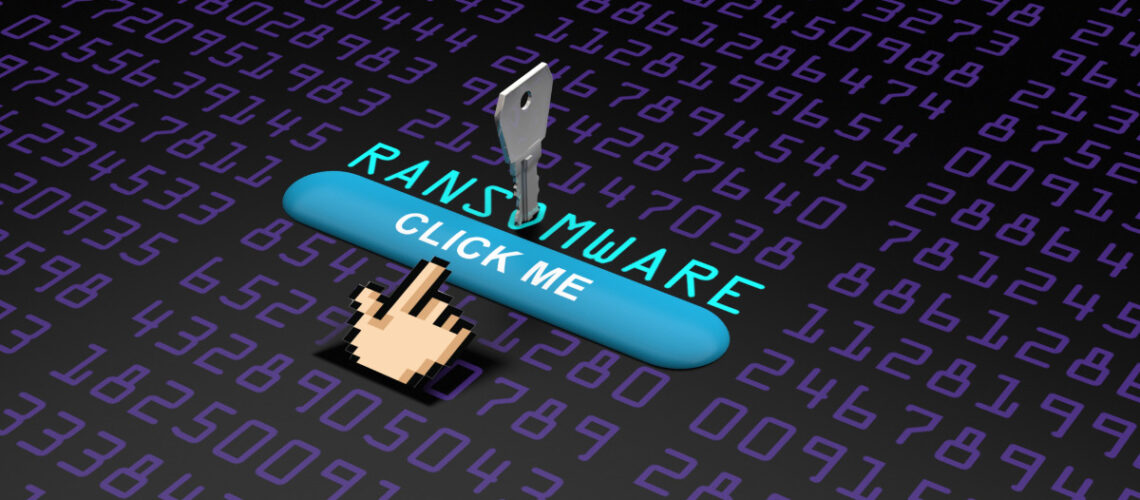Ransomware attacks continue to evolve, posing a significant threat to organizations and individuals. To stay ahead of cybercriminals, it is vital to understand the latest trends in security and implement robust prevention strategies. These malicious attacks, which involve encrypting sensitive data and demanding a ransom for its release, have evolved considerably in recent years. This blog post explores the evolving landscape of ransomware attacks, highlights effective prevention measures, and emphasizes the critical role of cybersecurity in safeguarding against them.
Understanding the Security Landscape
Ransomware attacks have become increasingly sophisticated and targeted, leaving no organization or individual immune to the threat. Ransomware attacks involve cybercriminals encrypting a victim’s data and demanding a ransom, typically in cryptocurrency, in exchange for the decryption key. These attacks can be devastating, causing data loss, financial damages, and reputational harm. To combat this menace effectively, it’s essential to analyze recent trends and tactics employed by ransomware actors.
Targeted Threats: Ransomware gangs have shifted their focus from indiscriminate attacks to more targeted ones. They often conduct extensive research on their victims, identifying vulnerabilities and potential entry points before launching.
Double Extortion: In a bid to maximize their profits, cybercriminals have adopted a double extortion strategy. In addition to encrypting data, hackers steal sensitive information and threaten to release it unless the ransom is paid, adding another layer of complexity to the situation.
Ransomware-as-a-Service (RaaS): Ransomware-as-a-Service platforms have made it easier for cybercriminals to launch attacks. These platforms offer malware and support services to less experienced hackers, expanding the reach of attacks.
Dark Web Transactions: Ransom payments are typically made in cryptocurrencies, making it difficult to trace the transactions. Cybercriminals often demand payments through Bitcoin or other digital currencies, making it challenging for law enforcement agencies to track them.
Supply Chain Attacks: Attackers are increasingly targeting supply chains to disrupt multiple organizations at once. By compromising a trusted vendor or service provider, cybercriminals can infiltrate multiple networks through a single breach.
Preventative Measures
Given the evolving nature of threats, it is essential to implement effective prevention strategies. Here are some proactive steps to protect against ransomware attempts:
Employee Training: Educating employees about the risks of phishing emails and suspicious links can go a long way in preventing ransomware threats. Regular training and awareness programs help employees identify potential threats and avoid falling victim to them.
Strong Password Policies: Enforcing strong password policies, including regular password updates and the use of multi-factor authentication (MFA), can significantly enhance network security and prevent unauthorized access.
Regular Software Updates: Keeping all software, including operating systems and applications, up to date is crucial. Cybercriminals often exploit known vulnerabilities, so updating software patches those vulnerabilities and strengthens your defense.
Data Backup and Recovery: Regularly backing up critical data is essential. Ensure backups are stored offline or in a secure cloud environment. This will enable you to restore your data without paying a ransom if an attack occurs.
Network Segmentation: Segmenting your network can limit the lateral movement of ransomware within your organization. If one segment is compromised, it can be isolated, preventing the spread of the attack.
Security Software: Employing robust antivirus and anti-malware software can help detect and prevent ransomware infections. These tools can identify and block malicious files and activities.
Incident Response Plan: Develop a comprehensive incident response plan that outlines the steps to take in the event of a ransomware threat. This plan should include communication protocols, legal considerations, and actions to recover data and minimize downtime.
The Role of Cybersecurity
Effective cybersecurity measures are the backbone of ransomware prevention. Cybersecurity encompasses a range of technologies, practices, and policies that work together to safeguard against ransomware risks. Here’s how it plays a pivotal role:
Firewalls and Intrusion Detection Systems (IDS): These security measures act as the first line of defense against ransomware attacks. Firewalls monitor incoming and outgoing traffic, while IDS identify unusual patterns that may indicate an attack in progress.
Endpoint Security: Endpoint security solutions protect individual devices (endpoints) from ransomware. They include antivirus software, intrusion prevention systems, and behavior-based detection tools.
Email Security: Advanced email security solutions can identify phishing emails and malicious attachments, preventing users from inadvertently launching malware.
Network Monitoring: Continuous monitoring of network traffic and behavior can help identify anomalies and potential ransomware activity, allowing for swift intervention.
Encryption: Encrypting sensitive data can render it useless to cybercriminals even if they manage to infiltrate your network. This adds an extra layer of security.
Threat Intelligence: Staying informed about the latest ransomware threats and tactics is crucial. Threat intelligence services provide up-to-date information on emerging threats, enabling organizations to adapt their defenses accordingly.
Protect Yourself From Ransomware Attacks
These types of threats have become a persistent threat to individuals and organizations alike. As cybercriminals continue to refine their tactics, it’s crucial to stay informed about the latest trends and adopt proactive prevention strategies. Employee training, strong password policies, regular software updates, data backup, and network segmentation are essential components of a comprehensive defense against attacks. Moreover, cybersecurity measures, such as firewalls, endpoint security, email security, and threat intelligence, play a critical role in safeguarding against these threats. By combining proactive prevention measures with effective cybersecurity practices, individuals and organizations can mitigate the risks posed by ransomware attacks and protect their valuable data.

